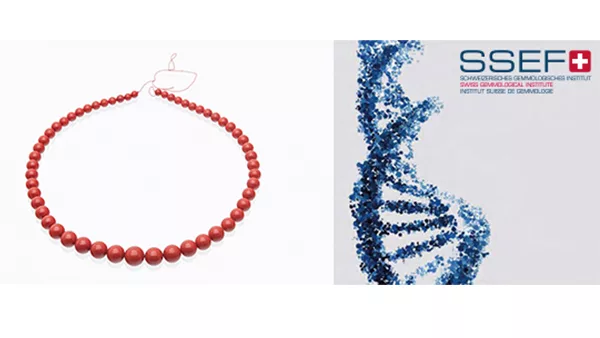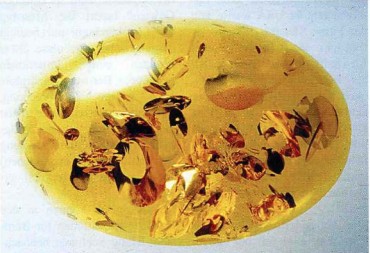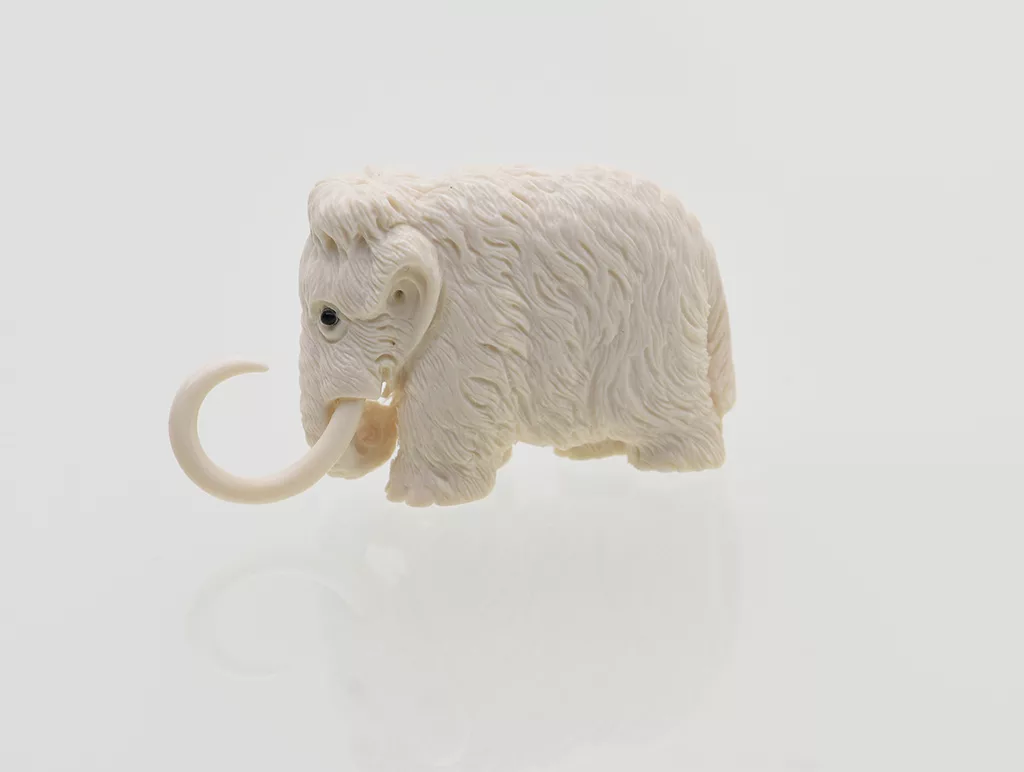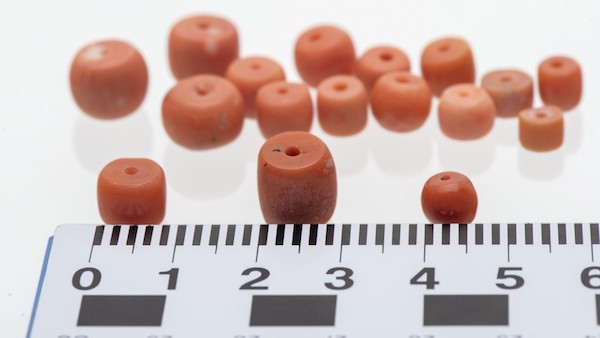
Novel Coral-ID method used on samples seized by swiss customs
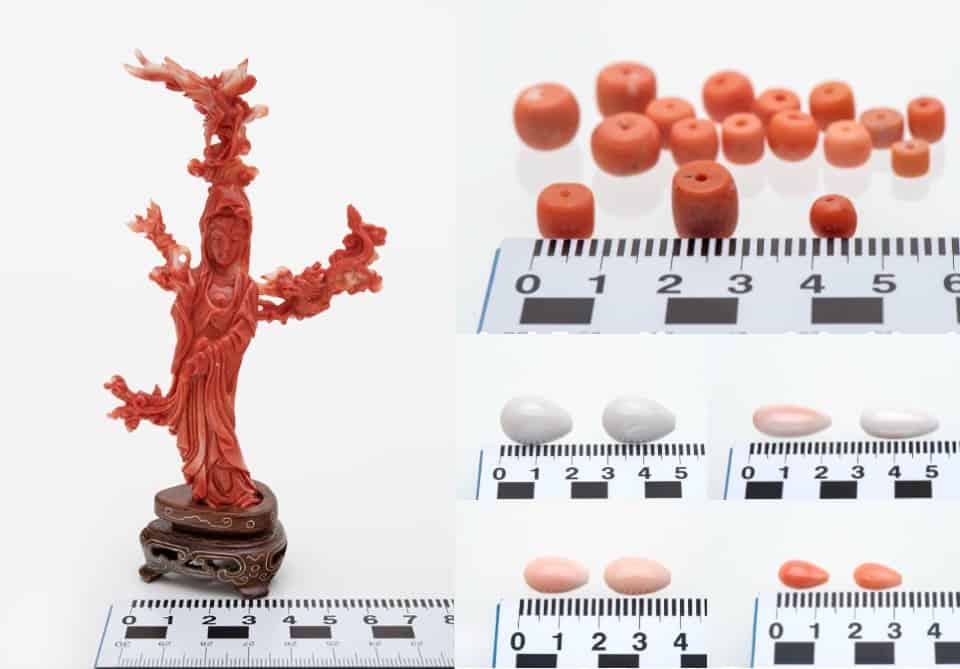
In 2022, an international research group led by scientists from the Swiss Gemmological Institute SSEF and the University of Zurich’s Institute of Forensic Medicine (IRM) reported a breakthrough in precious coral jewellery traceability, through the use of a novel forensically validated genetic technique called Coral-ID. Coral-ID is the first reliable and forensically validated method to scientifically identify corals using quasi non-destructive sampling, so that species protected by the Convention on the International Trade of Endangered Species (CITES) can be distinguished from their non-protected counterparts.
Four precious coral species used in the jewellery trade are listed on Appendix III of CITES, and they require species-specific and country- of-origin documentation when being traded and transported across international borders (Figure 2). For the customs authorities that must check the merchandise, the colour of a coral specimen has to date been the main indicator for ascertaining its biological species identity. However, different coral species can have similar colour ranges, and this frequently has caused difficulties when trying to conclusively identify the specific species of coral contained in a jewellery item.
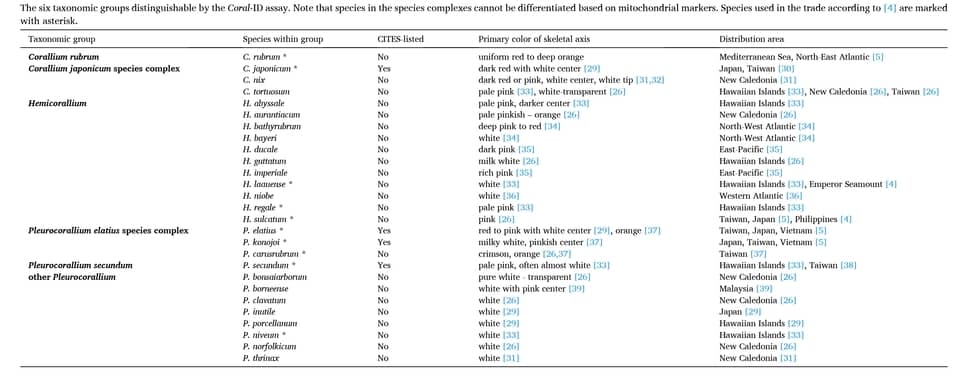
The Coral-ID method was tested on a real-world set of samples, comprised of 20 coral-set items (Figure 1) seized between 2009 and 2017 by the Swiss customs authorities. The objects were seized in five separate cases due to the absence of valid CITES documentation during their importation to Switzerland between 2009 and 2017. The samples were obtained from the Federal Food Safety and Veterinary Office of Switzerland (FSVO, Berne). Each object was labelled with a claimed taxon name, which was provided by the importers. Alternatively, if the objects lacked import documentation, they were registered as Corallium sp. in the FSVO documentation. Multiple species were found among corals of similar appearance, highlighting the importance of using the new Coral- ID method, which is to avoid misidentification of CITES-listed species as non-CITES listed species, and vice versa. Three of the 20 tested samples were shown to be of species that have not previously been associated with precious coral in the jewellery trade. This further underscores the need for additional scientific research.
CITES and precious corals
The Convention on International Trade in Endangered Species of Wild Fauna and Flora (CITES), an agreement signed and regularly updated by the parties of the United Nations, is responsible for monitoring and controlling the trade of vulnerable and endangered species. Trade regulations are codified by national legislation and enforced by local law enforcement authorities. In 1987, Spain made the first attempt to list Corallium rubrum, a historically abundantly fished precious coral species, in CITES, but it was rejected by CITES parties. Subsequent proposals by the USA in 2007 to include the Corallium genus and by the USA and the EU in 2010 to include the entire Coralliidae family in CITES Appendix II were also rejected. However, China successfully added four species, C. japonicum, C. elatius, C. konojoi, and C. secundum (which have subsequently been suggested to belong to the Pleurocorallium genus), to CITES Appendix III in 2008, and trade of any specimen or part of these species requires a certificate of origin for customs clearance to be legally traded internationally. Accurate species identification is crucial for implementing CITES regulations. Traditionally, species identification of corallid species has relied on microscopic examination of morphological traits, which can be lost in processed objects. As a result, species identification of precious corals can be difficult or even impossible in processed forms, making a reliable identification method essential for effective implementation of CITES regulations.
Research on coral genetics
Based on our understanding of coral phylogenetics, it is challenging to reliably differentiate certain coral species solely based on DNA analysis. This becomes particularly problematic for species complexes such as Corallium japonicum and Pleurocorallium elatius, which encompass both CITES-listed and non-CITES-listed species. The Coral-ID assay was designed to cautiously handle the taxonomic uncertainties and provide conservative conclusions regarding the taxonomic identity of an object. In some cases, additional non-genetic information, such as the colour of the object, the distribution area of potential species, and the location of known commercial precious coral fishing grounds, may be considered to make presumptive species identifications.

For samples identified as originating from the Corallium japonicum species complex, there are three closely related species: C. japonicum (CITES-listed), C. nix, and C. tortuosum (both non-CITES-listed). The red-coloured Corallium japonicum is commonly harvested from waters off Japan and Taiwan (Figure 3). Corallium tortuosum has a white or pale pink skeletal axis and is found in areas around the Hawaiian Islands, New Caledonia, and Taiwan. Although it is the most abundant precious coral in Hawaiian waters, it is less likely to be fished for commercial purposes due to its small size and usually deformed axis. Corallium nix can have a dark red skeletal axis, but it has only been reported from scientific surveys in the Norfolk Ridge (New Caledonia), where commercial coral fishing has never occurred. Therefore, if an object is red and identified as originating from the Corallium japonicum species complex, it is presumptively from the CITES-listed Corallium japonicum species.
In the case of samples identified as originating from the Pleurocorallium elatius species complex, there are three morphologically similar species: the red-pink P. elatius and the mainly white P. konojoi (both CITES-listed), and the red Pleurocorallium carusrubrum (non-CITES-listed). The first two species have been harvested in large quantities from Japan and Taiwan. The latter has been found exclusively in the waters of northern Taiwan, and its material is expected to be mixed in stocks of P. elatius in the market. Therefore, if a sample is white or pink, it is presumptively from the CITES-listed P. konojoi or P. elatius, respectively, while if red, it could be either P. elatius or P. carusrubrum. Among the confiscated objects we analysed, three objects (Object 1 – pure dark red, Object 2 – red with white parts, and Object 20 – pure white) fell within the Pleurocorallium elatius species complex. By combining the genetic results with morphological cues, we may presumptively conclude that Object 20 is from the CITES- listed P. konojoi, while Objects 1 and 2 could be either P. elatius or P. carusrubrum.
Such research shows the importance of carrying out fundamental science and peer-reviewed research on raw materials used in the jewellery industry. Genetic analysis of precious corals is clearly a very useful tool to achieve greater transparency in the trade. In some cases, DNA fingerprinting may not be successful if the coral samples are too old and insufficient fresh DNA is present.
Precious coral identification services are being offered by SSEF in partnership with the Institute of Forensic Medicine at the University of Zurich, which is one of Switzerland’s leading forensic institutes. All analyses are carried out in laboratory facilities accredited according to the ISO 17025 standards. Ongoing research is seeking to further elucidate precious coral genetics and allow for more even more conclusive separation of species on a genetic basis.
Detailed information about the use of DNA fingerprinting of precious corals can be found in the following journal article: Lendvay B., Cartier L.E., Costantini F., Iwasaki N., Everett M.V., Krzemnicki M.S., Kratzer A., Morf N.V., 2022. Coral-ID: A forensically validated genetic test to identify precious coral material and its application to objects seized from illegal traffic. Forensic Science International: Genetics 58 (2022), 102663. https://doi.org/10.1016/j.fsigen.2022.102663
